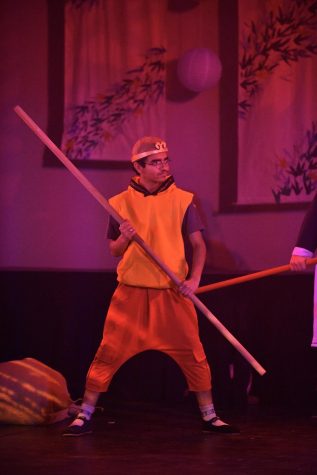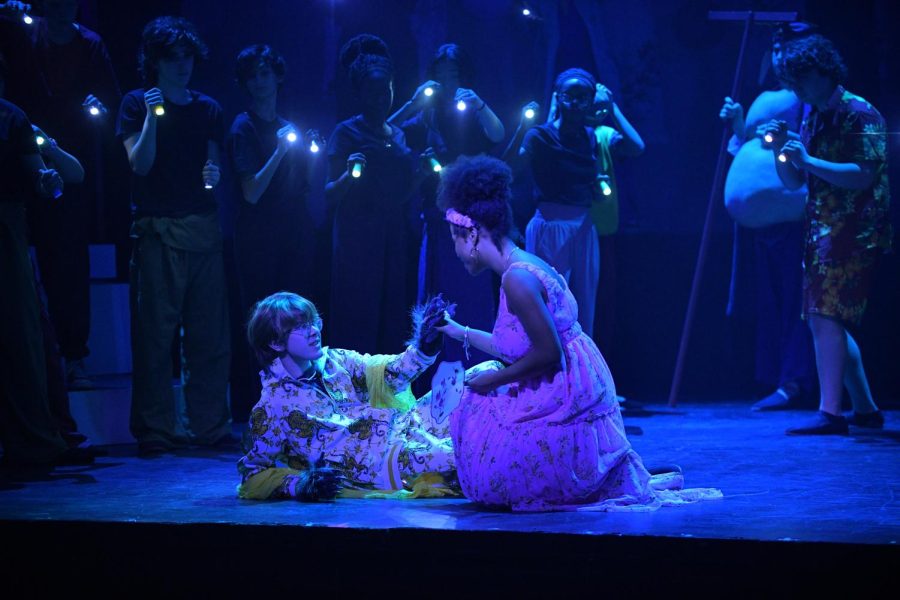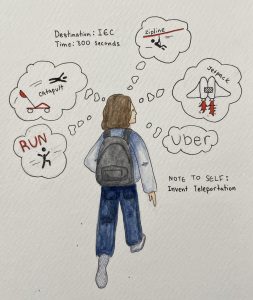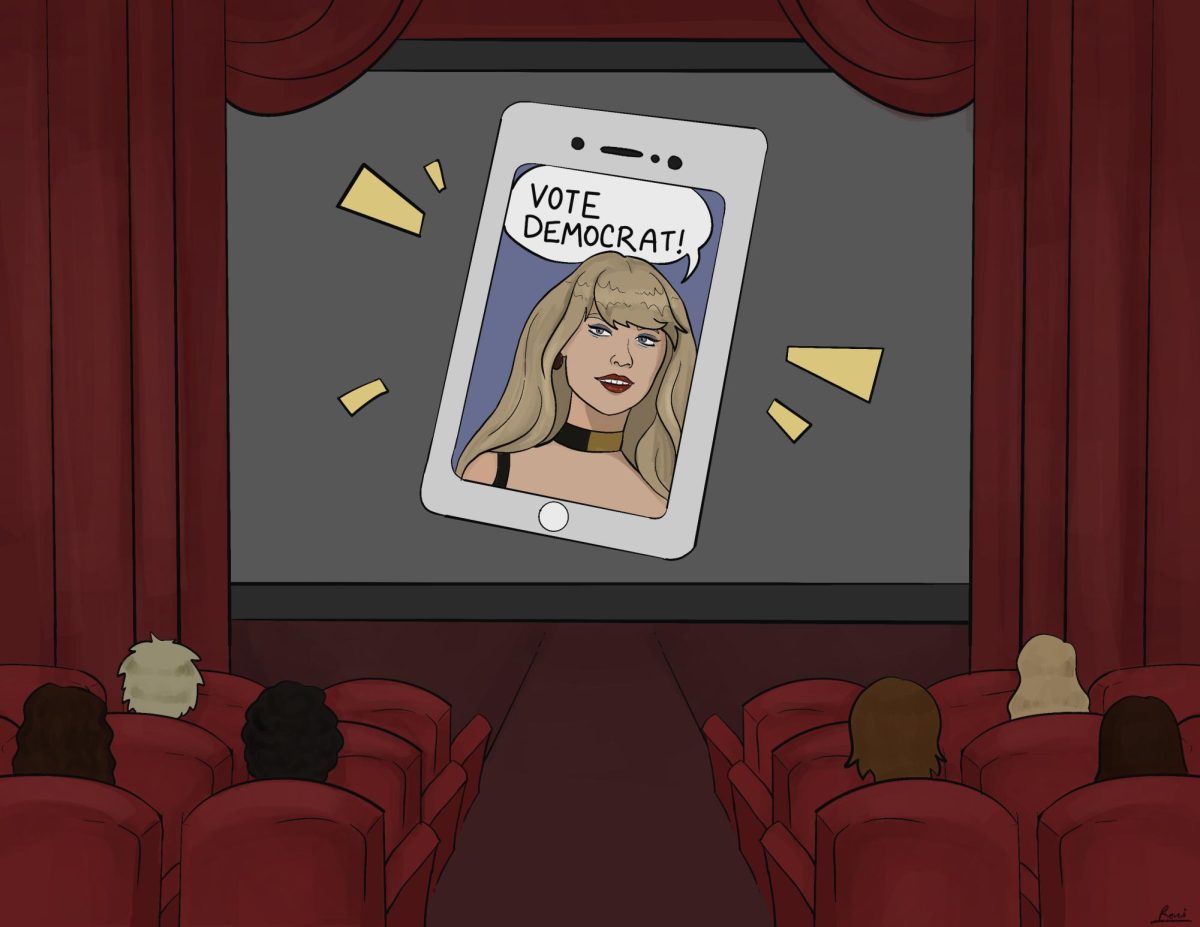Mainstage celebrates Chinese culture in its adaptation of “Journey to the West”
Jake Lefort ’23 and Morgan Young ’23 cast as Yellow Robe Demon and Princess respectively performed last week for the Masters community. Thanks to the humorous dialogue, interesting lighting effects and great acting, their scene was one of the most memorable in the play.
November 4, 2022
“Journey to the West“, a beloved fantasy story from China, is finally coming to Masters. MainStage presented their adaptation of the story to the school community last week.
Meg O’Connor, Upper School theater teacher and director of the play, credited the idea to former Masters student Zara Zhang ‘23. For Zhang and many other Chinese students who grew up listening to or watching the story, the play is an essential part of their culture and considered one of the most well-known books in China with adaptations produced almost every year.
O’Connor said, “There’s a long tradition in China of taking aspects of the story and changing it and adapting it. So we are just part of that tradition.”
The 16th century novel attributed to Wu Cheng’en combines adventures, humor, spiritual and fantasy elements. It tells the story of Buddhist monk Sanzang who has to overcome 81 ordeals on his journey to find the sacred scriptures. For the characters, it is also a personal journey towards enlightenment and inner peace.
Before coming to Masters, O’Connor had already worked to direct the show in another school. The script was then based on the literary adaptation by a famous American playwright Mary Zimmerman. O’Connor recalled that many Chinese students in the school felt that Zimmerman’s adaptation missed some of the most important characters. This year, while working on her own adaptation, O’Connor drew from that feedback and collaborated with Zhang and other Chinese students in the school to make sure that the play actually felt like an authentic telling of “Journey to the West“.
Despite having to simplify some plotlines for time’s sake, O’Connor worked hard to preserve the story’s traditional spirit while making it engaging and comprehensible for the modern American audience. She read about five different English translations of the book and worked closely with her students, friends, and relatives to make sure that the script represented the book’s most important elements. To better reflect the author’s writing style and the story’s tone, she also watched a famous mini-series “Journey to the West“.
“I spent a lot of time watching that to understand the Chinese humor, because there’s a lot of very slapstick humor. It’s very physical, it’s very over the top…” O’Connor said. “In addition to all of the comedy, there were also moments where I wanted to incorporate poetry, because the original is very poetic… then for the portions where there’s actual Buddhist text, there are several sutras in the script that are taken from the actual text.”
Jessie Xie, a Chinese student, who played Sanzang and helped to bring the play to life, said that they wanted to get people interested in the show by presenting how those modern elements play into the ancient texts.
Alongside the play, O’Connor has also worked with several students to design the costumes. Considering that the cast is mostly American, MainStage had to make sure that the costumes represented the culture in a respectful way. Since the characters’ dialogues were modernized to fit the twenty-first century, it also did not make much sense to have the characters in overly old-fashioned clothes.
“Our costumes are a very strange mix of modern and ancient and Chinese and American, which is sort of like our theater company. We’re a mix of so many different cultures and different countries,” O’Connor said.
Amaris Asiedu, an American student who played Sha Wujing and helped with the costumes, said she tried to incorporate more modern Chinese elements to be respectful. For example, she researched the silhouettes from modern subcultures and dynasties relevant to the story for inspiration and included red as the color of luck in the clothes of pilgrims.
Since the show is abstract in terms of its time and setting, the tech director Peter Wylie tried to create an environment that could work with different plot lines but still gave signification of the Chinese heritage.

“The most prominent things that we see are the headers, which are an adaptation of what we see in Chinese rooflines of that architecture and time period,” Wylie said. “And then bringing in elements of the Chinese lanterns. And then the banners that we worked to pull from the types of Chinese nature one would find, for example, bamboo leaves.”
Besides constructing the set, MainStage also worked with the cast to make sure that they correctly represented their given characters. Since the play decided to use the characters’ original names instead of American translations, a group of Chinese students helped the actors with pronunciation.
For many Chinese students, “Journey to the West“ is a part of their childhood. That is why it was really important for Mainstage to correctly represent the story and not disappoint their international audience.
“Making sure you hold it up to the standard without making fun of the culture is a really important thing,” Asiedu said.
Reflecting on this experience, Xie said she felt really proud of all the hard work put into the production in order to get the original idea down and to make it creative and fun for the audience to watch. Despite the concerns of possible cultural appropriation, she thought the play is rather a homage to the culture.
Xie said, “I feel like we come from a good intention, because we were trying to preserve and present this culture that we’re proud of and want to correctly represent.”


















